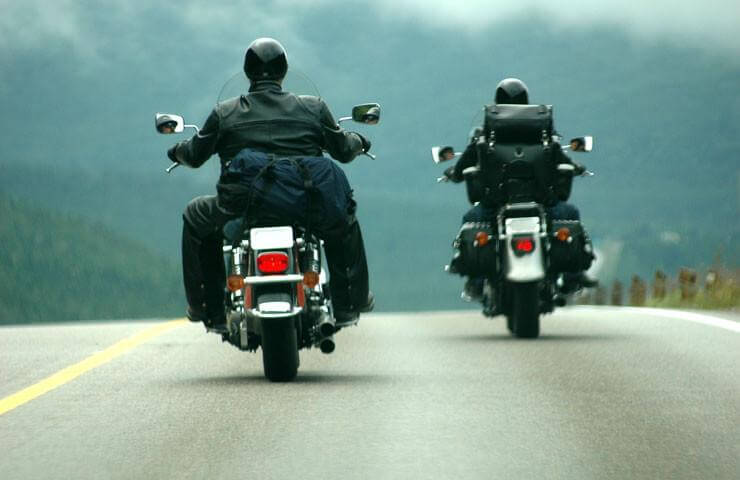PILGRIMAGE: A Tourer's Checklist

In my last piece on touring, I mentioned how being over-prepared especially for long distance rides is hardly ever a bad thing. Here I list some really important things to take note so that once you start your journey, there really won't be anything coming between you and the open road.
DOCUMENTATION
Passport
Travelling to Thailand is easy for Malaysians because we don’t require a visa for entry, so presenting a Malaysian International Passport will suffice. However, do ensure that your passport is valid for a further 6 months from the date of travel.
Vehicle’s Registration Card
Remember to bring this along if you’re riding your own bike into Thailand.
You may bring a photocopy if you’re still serving the loan, but you do require an authorisation letter from your bank/finance/shop/owner of the bike, stating that they allow you to ride the bike across the border, by stating the bike’s registration number, chassis number, the owner’s name, your full name and IC number.
International Driving Permit (IDP)
Best to have when you’re riding overseas. A Malaysian driving license needs to be valid for one full year during application, meaning that you will need to also renew you driving license at the same time if it’s not. The IDP can be obtained from Road Transport Department and costs RM150 to renew for a year.
Personal Travel Insurance
DO NOT skimp on this. Whether is it utilized or not isn’t the point. In South Africa for example, private hospitals require a deposit of 20,000 Rand even before they lay a finger on you, except if you have travel insurance.
Medical assistance in Thailand is also not cheap by comparison.
Again, DO NOT travel without insurance.
Vehicle Insurance
This can be purchased near the border. The receipt will be handed to the agent at the border crossing to produce a certificate. As with the Departure card, do look after it as you will need to hand it over when you cross back into Malaysia.
Please remember that the certificate MUST be handed back to the Thai Immigration officer, lest your vehicle is considered to have not crossed the border back into Malaysia.
Currency
Regardless what currency you’re holding, its still best to change to THB before you set out on your ride.
TELECOMMUNICATION
For mobile calls and data usage, it’s best to purchase a tourist SIM card. You could always activate roaming with your telco, but connectivity can get pretty spotty.
I’d recommend dtac’s Happy Tourist SIM Card.The THB 299 includes 7-day 1.5 GB data, THB 100 voice call credit and valid for 35 days after activation; whereas the THB 599 pack includes 15-day 4 GB data, and THB 100 voice call credit.
Plus, it utilizes one of Thailand’s best telco network infrastructures. I’ve personally used the 4G signal to upload pictures to Facebook while at sea on a boat between Chicken Island and the main Phuket island.
Don’t worry, you’re still able to chat via Whatsapp as if you never changed your number, as the apps recognizes your phone’s contacts (depending on OS, of course).
The SIM cards are available almost anywhere, but are easiest to obtain in Thailand’s numerous 7-Eleven outlets. Your passport is required for instant activation.
NAVIGATION
There’s no doubt about the fun of riding in a foreign land. But again, always be fully prepared.
It’s always best to have a navigation device at your disposal. Phone apps such as Waze and Google Map have pretty much taken over from dedicated GPS navigation units but let’s study the pros and cons of both.
|
WAZE / GOOGLE MAPS |
GARMIN ZŪMO SERIES |
|
Pros |
Pros |
|
Uses your smartphone. |
Waterproof. |
|
Easy to use. |
Independent from mobile network. |
|
Destinations are usually up-to-date. |
Doesn’t kill your phone’s battery. |
|
|
|
|
|
|
|
Cons |
Cons |
|
Needs local network for data. |
Make sure the maps are up to date! |
|
Dependent on your phone’s GPS capability. |
Extra item to carry. |
|
Need to waterproof the phone! |
|
|
Drains phone’s battery. |
|
|
Heats up the phone. |
|
HYDRATION
Dehydration is among the biggest risk to motorcyclists, but thankfully, the effects usually creep in slowly enough for us to notice. The symptoms vary among individuals, but they usually take the form of drowsiness, loss of concentration, aching joints, etc.
If you feel any of these things, it’s time to stop for a drink.
We usually rehydrate by chugging down 3 types of drinks: Red Bull, 100 Plus and plain ol’ H2O. There’s no secret formula of how much you should consume, but as with all foodstuff, moderation is key.
And please! NO ALCOHOL!